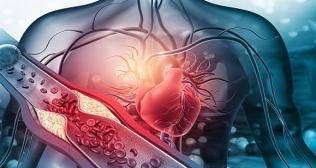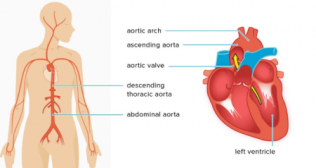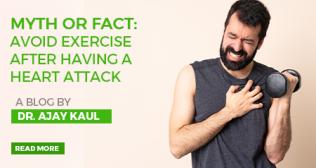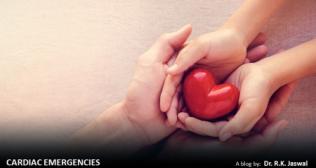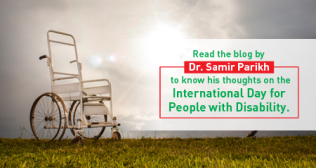
Cardiac Sciences
Heal-Thy Heart
Dr. Ankur Ahuja Oct 31, 2023
 How does the incidence of heart disease vary in men and women?
Women as a group are affected equally, although differently than men. Many disorders have a divergent frequency in both genders. At a younger age, women are less affected by coronary artery disease, but post-menopausal women tend to suffer more. While women, tend to have a higher incidence of hypertension, metabolic syndrome (obesity and its associated factors), and are affected more severely by diabetes, they suffer from heart failure with preserved heart function as compared to men, who have heart failure with weak heart functions.
Women also face other concerns like pregnancy-associated hypertension/ eclampsia, gestational diabetes, oral contraceptive/ hormone replacement therapy-induced complications, polycystic ovary disease, breast cancer, etc. all of which further have their implications on cardiac health.
How do the symptoms, diagnostic interpretations, and treatment plans differ on women?
Women often take a backseat in terms of health in most societies. They tend to ignore their symptoms and seek medical care less often.
Their disease manifestations are also a little different - they tend to have chest pain less frequently and more often have breathlessness and fatigue as symptoms of a heart attack. The chest pain of angina, if present, tends to be at rest, often at night, rather than on exertion.
Even the interpretation of certain diagnostic tests is different for women. Their resting ECGs tend to have changes which raise suspicion of disease; treadmill test often is false positive and nuclear cardiac studies suffer from interference by breast tissue. Coronary angiography frequently comes out normal in female patients having typical angina with positive preliminary tests. These issues make the diagnosis of coronary artery disease difficult and often delayed in women.
Women also respond differently to certain therapies eg. they have a higher complication rate after angioplasty and bypass surgery, but do better after valve surgeries and CRT (cardiac resynchronization therapy).
How can the risk of cardiac disease be reduced in women?
Women need to be more aware and responsive to their health issues. They need to dedicate more time to their wellbeing - do regular exercise, control weight, and take a prudent diet rich in fruits and vegetables, low in fats and refined carbohydrates. Women need to reconsider oral contraceptive use after 35 years of age and stop smoking. They should be aware of their blood pressure, blood sugar, and cholesterol levels. Most importantly, they should address their symptoms and seek medical care timely and appropriately for long and healthy life.
How does the incidence of heart disease vary in men and women?
Women as a group are affected equally, although differently than men. Many disorders have a divergent frequency in both genders. At a younger age, women are less affected by coronary artery disease, but post-menopausal women tend to suffer more. While women, tend to have a higher incidence of hypertension, metabolic syndrome (obesity and its associated factors), and are affected more severely by diabetes, they suffer from heart failure with preserved heart function as compared to men, who have heart failure with weak heart functions.
Women also face other concerns like pregnancy-associated hypertension/ eclampsia, gestational diabetes, oral contraceptive/ hormone replacement therapy-induced complications, polycystic ovary disease, breast cancer, etc. all of which further have their implications on cardiac health.
How do the symptoms, diagnostic interpretations, and treatment plans differ on women?
Women often take a backseat in terms of health in most societies. They tend to ignore their symptoms and seek medical care less often.
Their disease manifestations are also a little different - they tend to have chest pain less frequently and more often have breathlessness and fatigue as symptoms of a heart attack. The chest pain of angina, if present, tends to be at rest, often at night, rather than on exertion.
Even the interpretation of certain diagnostic tests is different for women. Their resting ECGs tend to have changes which raise suspicion of disease; treadmill test often is false positive and nuclear cardiac studies suffer from interference by breast tissue. Coronary angiography frequently comes out normal in female patients having typical angina with positive preliminary tests. These issues make the diagnosis of coronary artery disease difficult and often delayed in women.
Women also respond differently to certain therapies eg. they have a higher complication rate after angioplasty and bypass surgery, but do better after valve surgeries and CRT (cardiac resynchronization therapy).
How can the risk of cardiac disease be reduced in women?
Women need to be more aware and responsive to their health issues. They need to dedicate more time to their wellbeing - do regular exercise, control weight, and take a prudent diet rich in fruits and vegetables, low in fats and refined carbohydrates. Women need to reconsider oral contraceptive use after 35 years of age and stop smoking. They should be aware of their blood pressure, blood sugar, and cholesterol levels. Most importantly, they should address their symptoms and seek medical care timely and appropriately for long and healthy life. Categories
Clear allMeet the doctor

Dr. Ankur Ahuja
SENIOR CONSULTANT CARDIOLOGY | Fortis Mohali
- Cardiac Sciences | Interventional Cardiology
-
20 Years
-
1250








